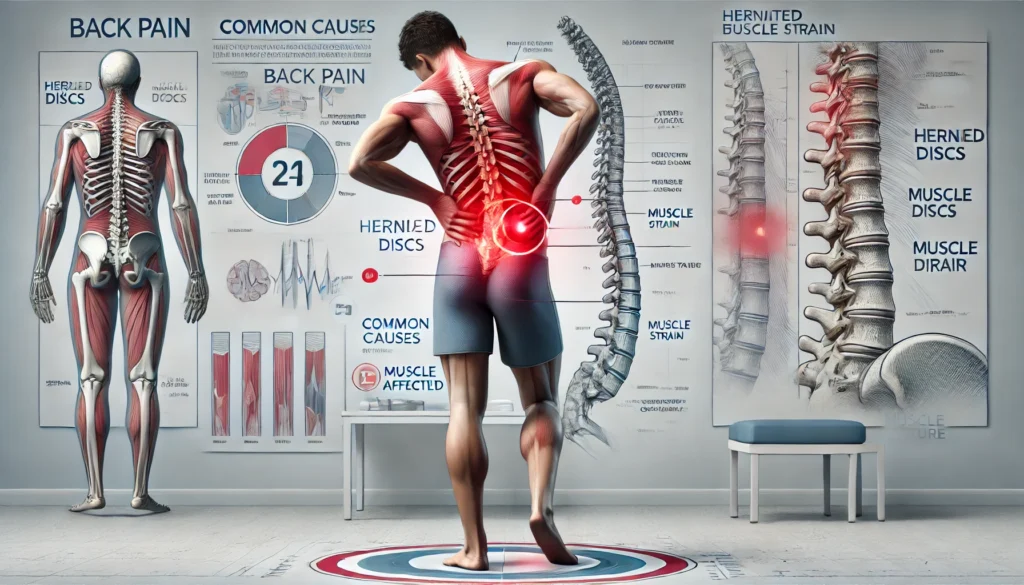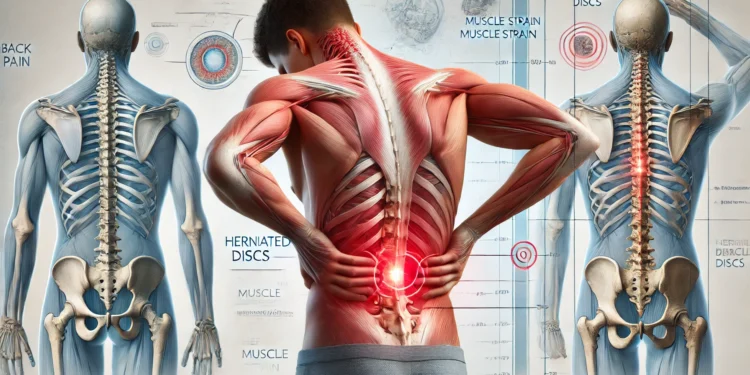Back pain when bending over is a common complaint that affects people of all ages. Whether it’s a sharp pain or a dull ache, this discomfort can interfere with daily activities and reduce quality of life. Understanding the causes, prevention strategies, and treatment options can help manage and alleviate this issue effectively.
Common Causes of Back Pain When Bending Over
- Muscle Strain – Overstretching or tearing muscles and ligaments can lead to pain, especially after heavy lifting or sudden movements.
- Herniated Disc – When the soft tissue between vertebrae pushes out, it can press on nerves and cause pain, particularly when bending.
- Poor Posture – Slouching or incorrect body alignment can put extra pressure on the lower back, leading to discomfort.
- Degenerative Disc Disease – Aging can cause spinal discs to wear down, leading to inflammation and pain when moving.
- Sciatica – Compression of the sciatic nerve can cause shooting pain in the lower back, hips, and legs, worsening when bending.
- Spinal Stenosis – Narrowing of the spinal canal can put pressure on nerves, leading to pain when leaning forward.
Read Also: Back Pain Between Shoulders – Upper Back Pain Between the Shoulder Blades!
Prevention Tips for Back Pain
- Maintain Proper Posture – Keep your back straight when sitting, standing, and lifting objects.
- Strengthen Core Muscles – Engage in exercises that strengthen abdominal and back muscles for better support.
- Lift Correctly – Bend at the knees instead of the waist when lifting heavy objects.
- Stay Active – Regular movement and stretching help maintain flexibility and reduce stiffness.
- Use Supportive Footwear – Proper shoes can help distribute body weight evenly and reduce back strain.
- Avoid Prolonged Sitting – Take breaks to stand and stretch if you sit for long periods.
Treatment Options for Back Pain
Home Remedies
- Rest and Ice Therapy – Applying ice packs to the affected area can reduce inflammation and provide pain relief.
- Heat Therapy – Using a heating pad or warm compress can help relax tight muscles and improve circulation.
- Gentle Stretching – Performing mild stretches can ease stiffness and enhance mobility.
Medical Treatments
- Physical Therapy – A physical therapist can recommend targeted exercises to strengthen muscles and improve flexibility.
- Chiropractic Care – Spinal adjustments can help realign the spine and relieve pressure.
- Pain Medication – Over-the-counter pain relievers such as ibuprofen can help manage discomfort.
- Injections – Cortisone injections may be recommended for severe cases to reduce inflammation.
- Surgery – In rare cases, surgical intervention may be needed for persistent pain due to structural issues.
Common Causes of Back Pain When Bending Over

Back pain when bending over can arise from multiple factors, including muscle strain, herniated discs, poor posture, and degenerative conditions. Muscle strain occurs due to overstretching or sudden movements, while spinal issues like herniated discs or spinal stenosis can compress nerves, leading to pain. Understanding these causes can help in selecting the right prevention and treatment strategies.
Prevention Tips for Back Pain
Preventing back pain involves maintaining proper posture, strengthening core muscles, and practicing safe lifting techniques. Regular physical activity, supportive footwear, and avoiding prolonged sitting can also reduce the risk of discomfort. Making these small lifestyle changes can help keep your spine healthy and pain-free.
Treatment Options for Back Pain
Treatment for back pain varies depending on its severity and cause. Home remedies such as ice therapy, heat application, and gentle stretching can relieve mild discomfort. For more persistent pain, physical therapy, chiropractic care, and pain medication may be recommended. In severe cases, cortisone injections or surgery might be necessary. Consulting a healthcare professional ensures the right treatment approach.
When to See a Doctor
Seek medical attention if you experience:
- Severe pain that doesn’t improve with rest
- Numbness or tingling in the legs
- Loss of bladder or bowel control
- Weakness in the legs
- Pain after an injury or fall
FAQs:
1 Why does my back hurt when I bend over?
Back pain when bending over is often due to muscle strain, herniated discs, or poor posture.
2 How can I prevent back pain when bending over?
Maintain good posture, strengthen core muscles, and use proper lifting techniques.
3 What are home remedies for back pain relief?
Rest, ice or heat therapy, gentle stretching, and over-the-counter pain relievers can help.
4 When should I see a doctor for back pain?
Seek medical attention if you experience severe pain, numbness, weakness, or loss of bladder control.
5 Can exercise help with back pain?
Yes, regular stretching and strengthening exercises can improve flexibility and reduce pain.
Conclusion:
Back pain when bending over can be caused by various factors, from muscle strain to underlying spinal conditions. By practicing good posture, engaging in strength exercises, and seeking appropriate treatment, you can effectively manage and prevent back pain.











